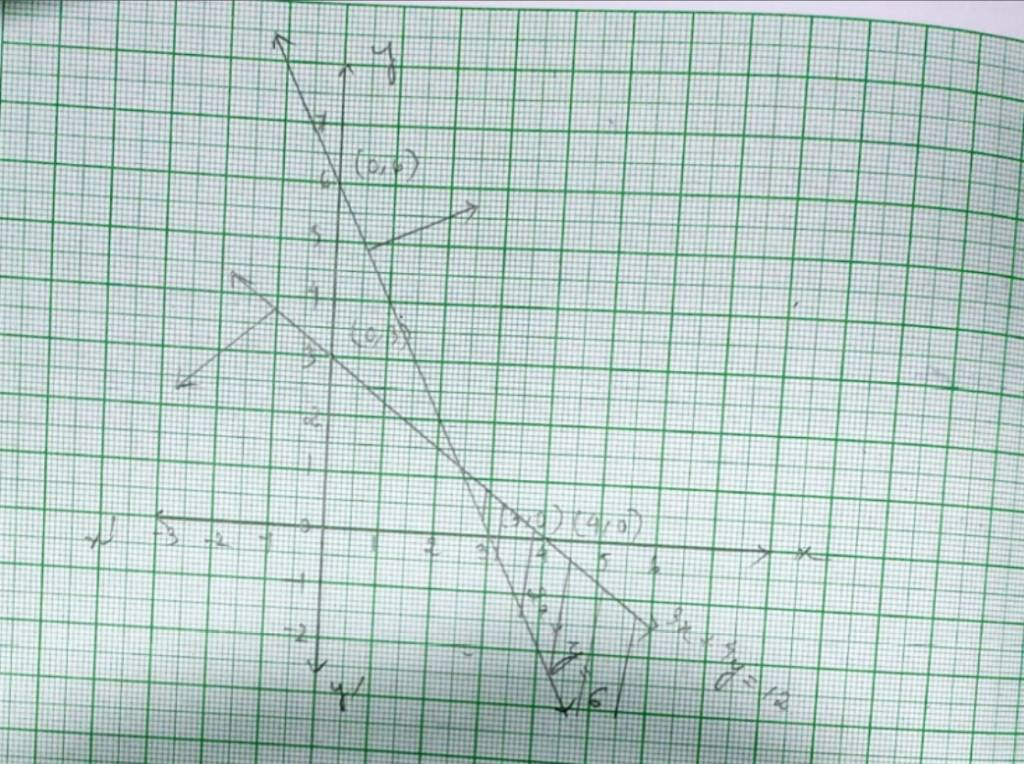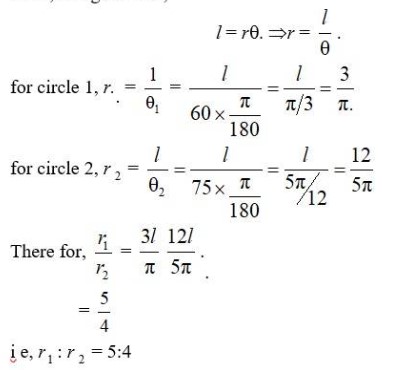Ncert Solutions Maths class 11th
Get insights from 1.6k questions on Ncert Solutions Maths class 11th, answered by students, alumni, and experts. You may also ask and answer any question you like about Ncert Solutions Maths class 11th
Follow Ask QuestionQuestions
Discussions
Active Users
Followers
New answer posted
5 months agoContributor-Level 10
45. The given system of inequality is
5x+4y≤ 20 - (1)
x≥ 1 - (2)
and y≥ 2 - (3)
The equation of inequality (1) is 5x+4y=20.
x | 4 | 0 |
y | 0 | 5 |
Putting (x, y)= (0,0) in inequality (1) we get,
5 * 0+4 * 0 ≤ 20 => 0 ≤ 20 which is true.
So, the solution region of inequality (1) includes the plane with origin (0,0).
∴ The shaded region indicates the solution of the given system of inequality.
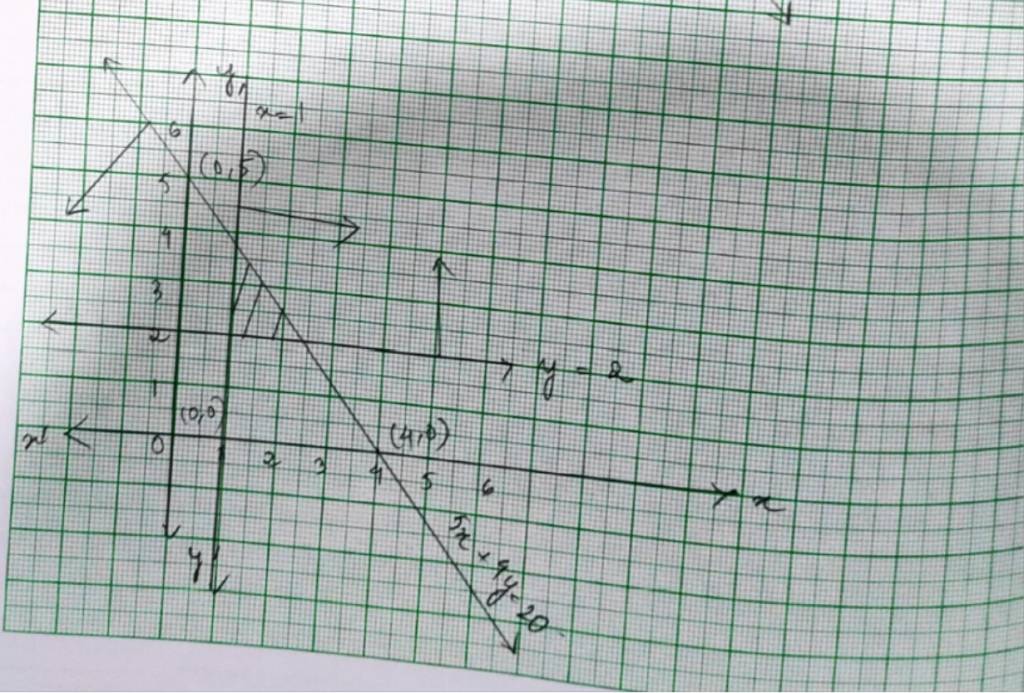
New answer posted
5 months agoContributor-Level 10
44. The given system of inequality is
x+y≤ 9- (1)
y>x- (2)
x≥ 0 - (3)
The corresponding equation of (1) is x+y=9 and (2) is y=x
x | 9 | 0 |
y | 0 | 9 |
x | 0 | 1 |
y | 0 | 1 |
Substituting (x, y)= (0,0) in (1),
0+0 ≤ 9 => 0 ≤ 9 which is true.
And putting (1,0) in (2)
0> 1which is false.
So, solution region of inequality (1) includes origin (0,0) and solution region of inequality (2) excludes plane having (1,0).
? Solution of region of given system of inequality is the shaded region.
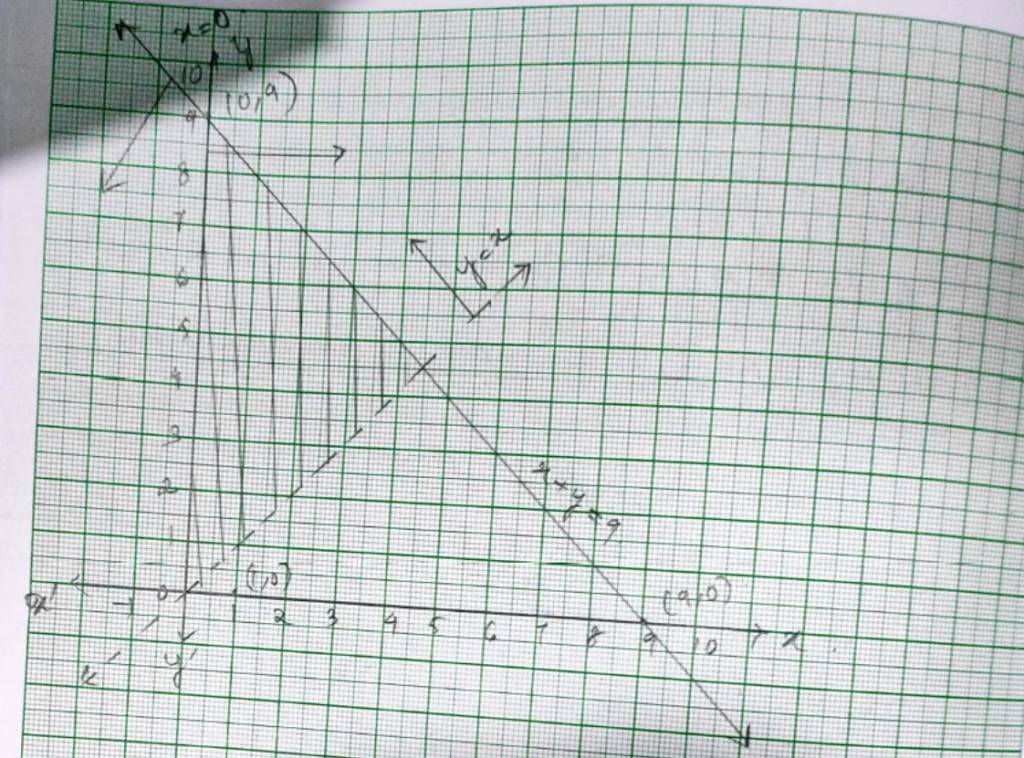
New answer posted
5 months agoContributor-Level 10
43. Given system of inequality is
2x+y≥ 8- (1)
x+2y≥ 10- (2)
The corresponding equations are
2x + y = 8
x | 0 | 4 |
y | 8 | 0 |
and x + 2y = 10
x | 10 | 0 |
y | 0 | 5 |
Now, putting (x, y)= (0,0) in inequality (1) and (2),
2 * 0+8 ≥ 8
0 ≥ 8 which is not true.
and 0+2 * 0 ≥ 10
0 ≥ 10 which is not true.
So, solution of plane of inequality (1) and (2) does not include the origin (0,0)
? The required solution of the given system of inequality is the shaded region.
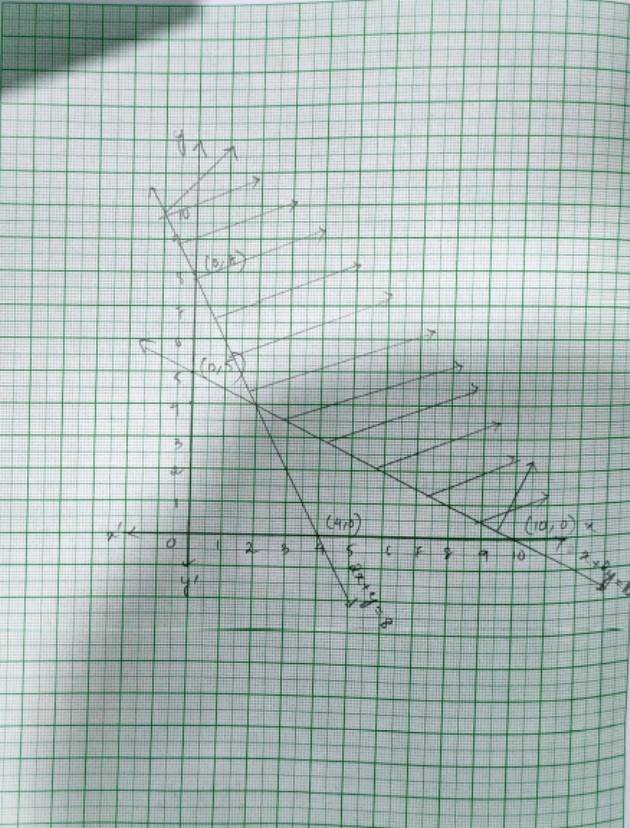
New answer posted
5 months agoContributor-Level 10
42. The given system of inequality is
x+y≤ 6 - (1)
x+y≥ 4- (2)
So the corresponding equations are
x+y=6
x | 0 | 6 |
y | 6 | 0 |
and x + y = 4
x | 4 | 0 |
y | 0 | 4 |
Putting (x, y)= (0,0) in equality (1) and (2),
0+0 ≤ 6 and 0 + 0 ≥ 4
0 ≤ 6 is true. => 0 ≥ 4 is false.
So, solution of plane of inequality (1) includes the origin and inequality (2) does not includes the origin.
? The reqd solution of the given system of inequality is the shaded region.
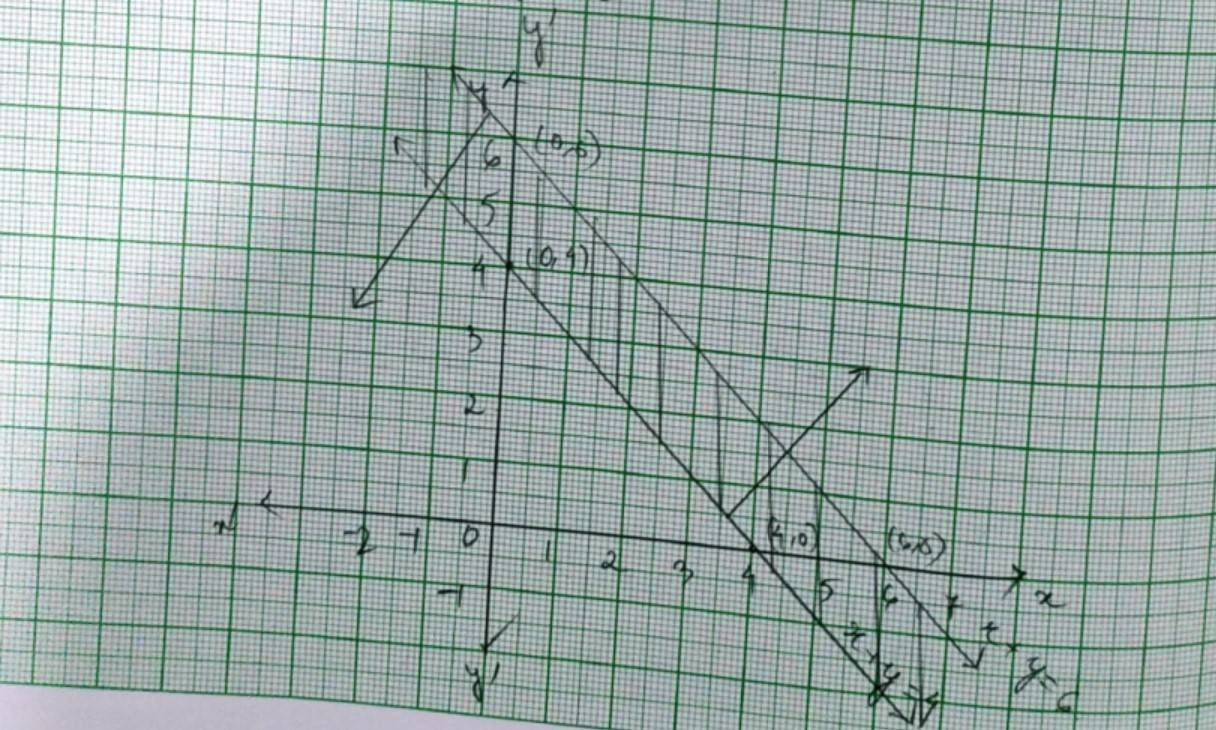
New answer posted
5 months agoContributor-Level 10
41. The given system of inequality is
2x – y> 1 - (1)
x – 2y< 1- (1)
So the corresponding equations are
2x – y=1
x | 0 | 0.5 |
y | –1 | 0 |
and x – 2y= –1
x | –1 | 0 |
y | 0 | 0.5 |
Putting (x, y)= (0,0) in (1) and (2) to cheek the inequality
2 * 0 – 0 > 1
0 > 1 which is not true.
and 0 – 2 * 0< 1
0< 1 which is not true.
So, the solution of plane of inequality (1)and (2) does not include the plane with point (0,0) or origin.
? The reqd. solution of the given system of inequality is the shaded region.
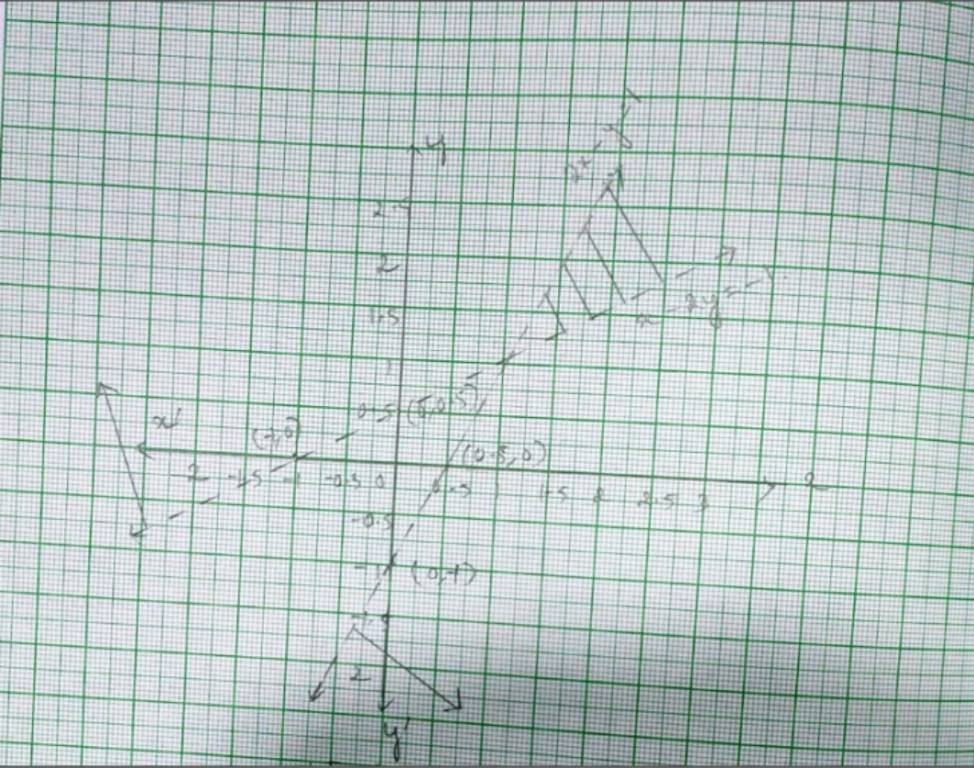
New answer posted
5 months agoContributor-Level 10
40. The given system of inequalities is
x + y ≥ 4.- (1)
2x – y< 0.- (2)
The corresponding equations are x+y=4 and 2x – y=0.
x | 0 | 4 |
y | 4 | 0 |
and
X | 0 | 1 |
Y | 0 | 2 |
Put (x, y)= (1,1) in (1) and (2).
So, 1+1 ≥ 4
2 ≥ 4 which is not true.
and 2 * 1 – 1<0
1<0 which is not true.
So solution of plane of inequality (1) and (2) does not include the plane with point (1,1).
? The reqd. solution of the given system of inequality is the shaded portion.
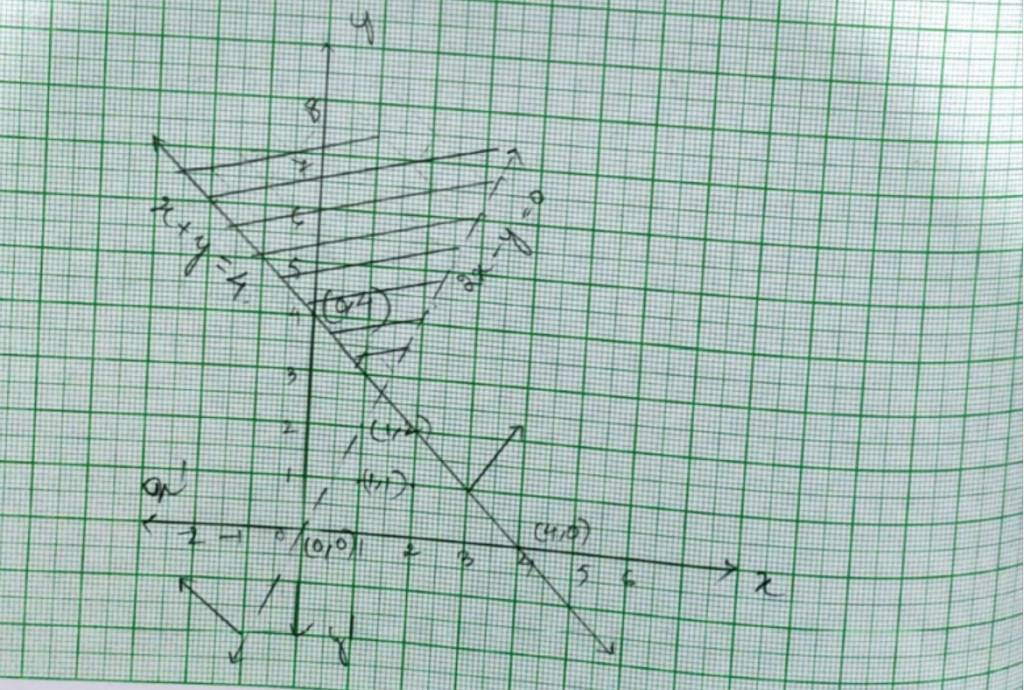
New answer posted
5 months agoContributor-Level 10
39.The given system of inequalities is
2x+y ≥ 6 - (1)
3x+4y ≤ 12- (2)
The corresponding equations are
2x + y = 6

and 3x + 4y = 6
So,

Put (x, y)= (0,0) in (1), (2),
? 2 * 0+0 ≥ 6
0 ≥ 6 which is false.
And 3 * 0+4 * 0 ≤ 12
0 ≤ 12 which is true.
So, solution of inequality (1) lies on the plane which excludes the origin and the solution of inequality (2) lies on
New answer posted
5 months agoContributor-Level 10
38.
2. The given system of inequalities are
3x+2y≤ 12- (1)
x≥ 1- (2)
y≥ 2- (3)
We draws the graphs of the lines 3x+2y=12 using points and as 3 * 0 + 2 * 0 ≤ 12
The solution is plane which includes the origin (0, 0).
0 ≤ 12
and x = 1 and y = 2.
The inequality (1), (2) and (3) represents the region between these three lines including the points on the respective lines. So, every point on the shaded region in first quadrant represents a solution of the given system of inequalities.
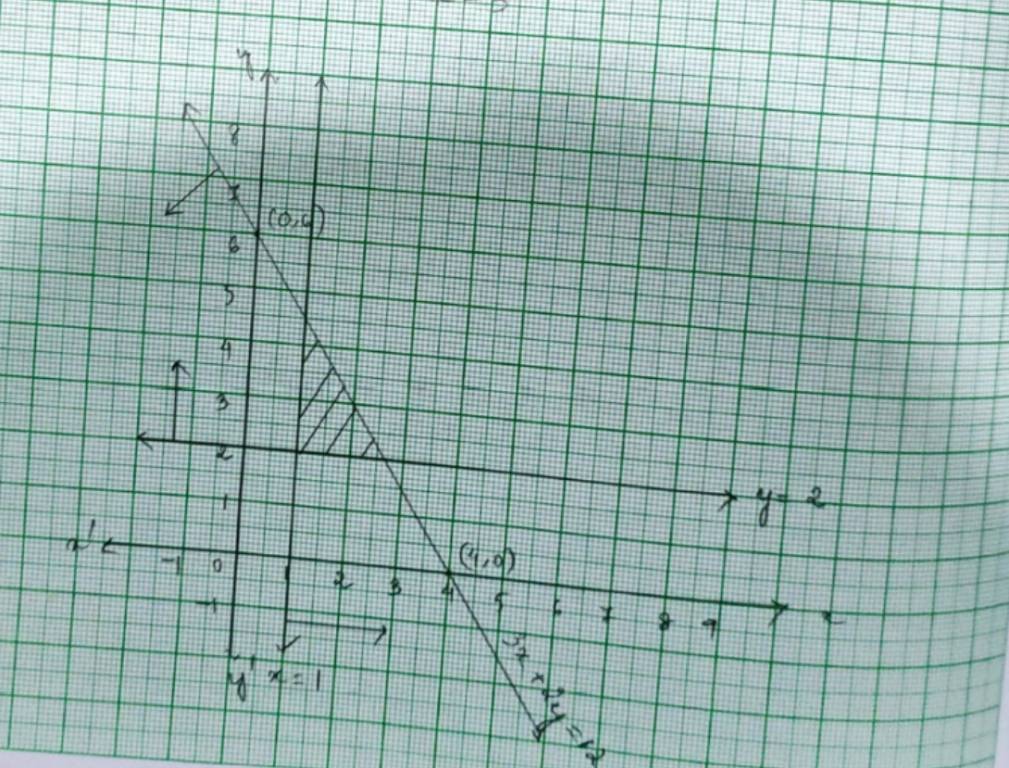
New answer posted
5 months agoContributor-Level 10
7. Here,
r= length of pendulum.
r= 75 cm.
(i) Arc of length, l = 10 cm
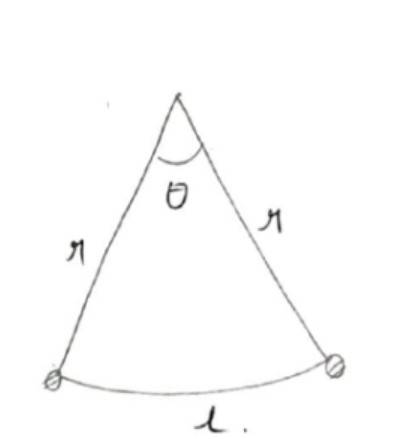
Ø= = radian.
(ii) Arc of length, l = 15 cm.
So, Ø= = radian.
(iii) Arc for length, l= 21 cm.
So, Ø= radian.
New answer posted
5 months agoTaking an Exam? Selecting a College?
Get authentic answers from experts, students and alumni that you won't find anywhere else
Sign Up on ShikshaOn Shiksha, get access to
- 65k Colleges
- 1.2k Exams
- 679k Reviews
- 1800k Answers

